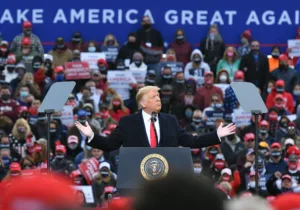On August 29, Michael O’Hanlon with the Center for 21st Century Security and Intelligence led a discussion on the budget control act under the next presidential administration. The question up for debate considered how raising the amount of money spent on defense could both create economic stability and benefit Washington and the American public, keeping in mind the ever-increasing national debt. Experienced panelists Robert Hale, Alice M. Rivlin, and Maya MacGuineas weighed in.
The main topic under scrutiny was the Overseas Contingency Operations (OCO) Fund, otherwise known as the Pentagon war budget. The OCO funds the Department of Defense (DoD), the State Department, and the Pentagon and is separate from the base budget of $520 billion that funds the U.S. military. Its budget is loosely decided one year in advance and is meant to cover incremental, temporary costs incurred from current conflict overseas.
Last year Defense Secretary Ash Carter, though, told the Senate that the OCO and its one-year funding did nothing besides create instability in an unbalanced defense program. He makes this argument because the OCO lacks a budget cap, has less oversight than the base budget, and is difficult to accurately estimate in advance. Former Under Secretary of Defense and Assistant Secretary of the Air Force, and panelist at the Brookings event, Robert Hale agreed with Carter insofar as instability has been the biggest obstacle for the DoD. Yet Hale favors keeping the OCO in place because he thinks instability originates elsewhere.
The reason Hale favors increasing the amount spent on the OCO can be explained in part by the results of the 2013 Budget Control Act. The intention of this legislation was to alleviate some of the national deficit by encouraging Congress to agree on reducing the federal budget as budget caps kept expenses in check. If agreement wasn’t reached, across-the-board spending cuts, or “sequestration”, would go into effect. Unfortunately, these cuts were instituted after Republicans and Democrats in Congress couldn’t agree on the federal budget. And the defense budget was affected for the worse.
The OCO fund is unaffected by sequestration and is untouched by disagreement about the defense budget at large. Hale therefore suggests that creating a budget cap and raising the amount that should go towards the OCO fund as part of the current budget control act is the best strategy for some unhindered stability during wartime. Military emergencies will inevitably arise during wartime that require funds from the OCO.
Founding Director of the Congressional Budget Office (CBO) and former Director of the Office Management and Budget (OMB) Alice M. Rivlin reiterates that a budget cap should be created for the OCO. She also advocates increasing the amount spent on defense through raising the percentage of GDP that goes towards defense spending. She has seen defense funding reflect the perceived need for it. For example, during a time in the Cold War, up to 10% of GDP went to defense spending because it was assumed a strong military was necessary. The 3% of GDP currently spent on defense, however, suggests there isn’t as much of a perceived need for the armed forces, which she believes is a misunderstanding of the nation’s current security needs.
So, how would increases in the budget caps happen? Maya MacGuineas, President of the Committee for a Responsible Federal Budget, believes the budget needs to be overhauled with a focus on priorities. Hale and Rivlin strongly agree that there needs to be reform in where the government’s money is going. According to them, Congress must decide on a long-term vision before a budget is put in place. This process is known as bottom-up budgeting and could be imperative for the next administration.
When budgeting for national security, MacGuineas says perceived threats and expected investments ought to be the most important costs accounted for. Expected investments include up-to-date technology, including third offset strategy capabilities, that can thwart perceived threats from adversaries.
Through spending revisions and instituting a larger cap on the OCO, the defense budget could be better prepared to handle unforeseen emergencies and estimated threats to national security. Keeping and increasing budget caps after re-prioritization are steps in the right direction that must be taken, despite less than ideal conditions. The hope is the next administration will thoughtfully implement longer-term priorities in the budget that reflect practical desires for stability in properly funding national security.
—
Jessica Meyers is an intern for Providence. She studied at Westmont College, with a focus on Political Science and English.
Photo credit: U.S. and Iraqi artillerymen fire American 105 mm howitzers during live-fire training on Al Asad Air Base, Iraq, Feb. 21, 2010. By Spc. Michael J. MacLeod via U.S. Army.





